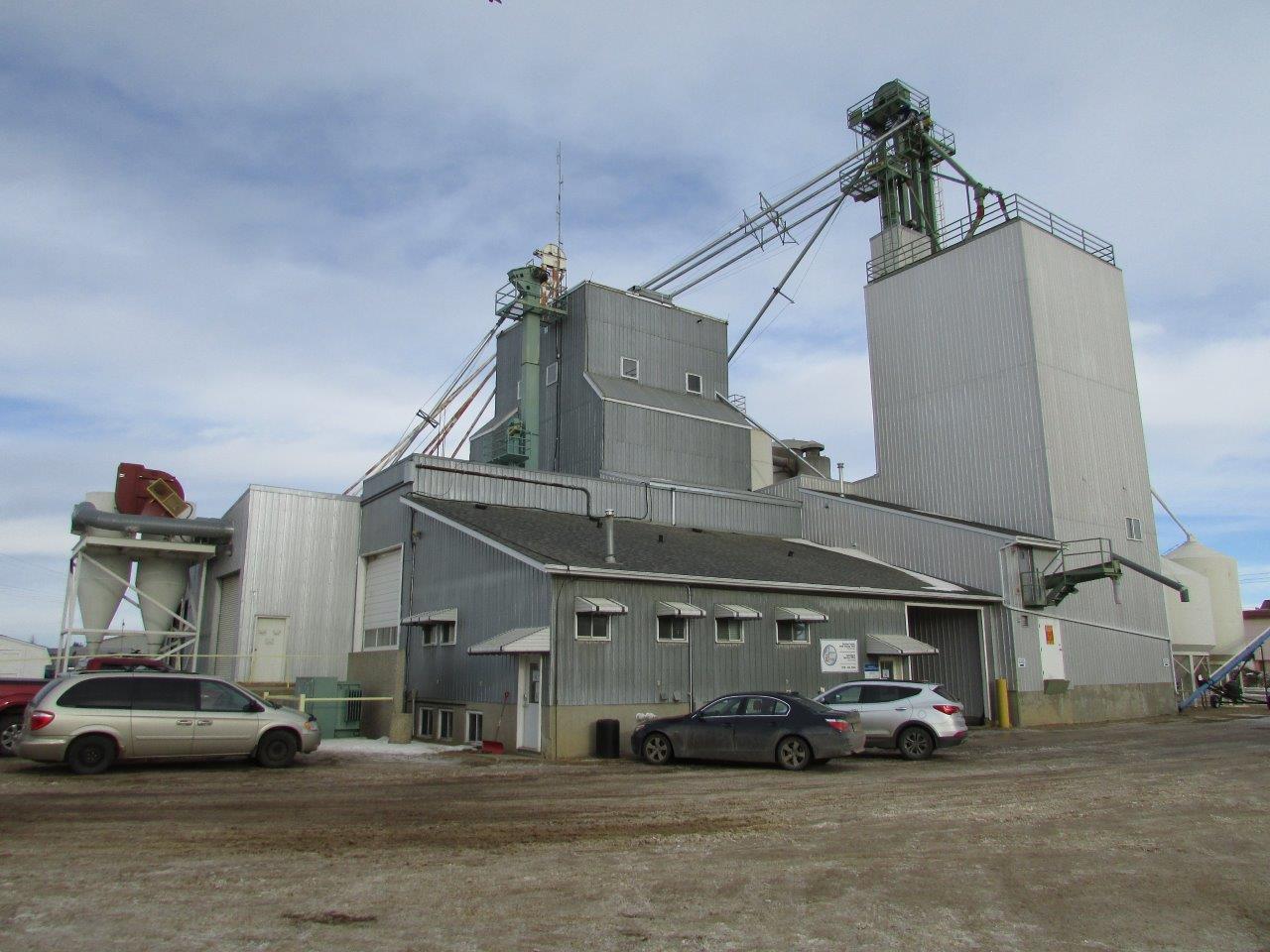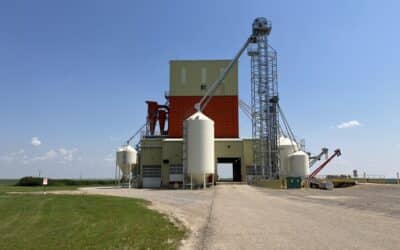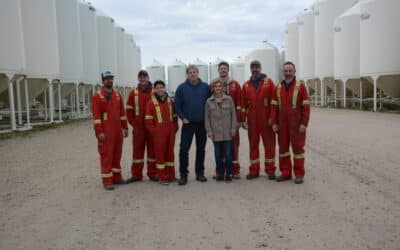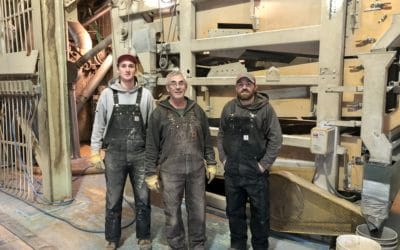At 71, you’re supposed to slow down a bit and not overdo it. Clearly, someone forgot to share that with the Camrose County Seed Cleaning Plant, which seems to get bigger and better with age.
In 1946, the Agricultural Service Board (ASB) in the Municipal District of Camrose saw that good clean seed was hard to find and chose to do something about it.
“The old army drill hall was rented through the Town of Camrose from 1946 to 1948 to clean and store seed grain,” said current plant manager Murray Van Petten. “The Alberta government rented cleaning machines to the operators and a profit of $7,000 was turned over to the M.D. of Camrose No.63.”
A Clean Start
Nothing against army drill halls, but the ASB decided in 1948 to build a new plant, thanks in part to a $10,000 grant from the province. Thus was born the first seed cleaning plant built in Alberta with municipal and provincial funding for use by the agricultural community.
“It’s from this basic idea that the co-op seed cleaning plants were built back then, with one-third financing from each of the provincial government, municipal government and shareholders,” says Van Petten. “In the case of the Camrose plant, the shareholder portion of the funds was provided by the proceeds of the first operation in the Camrose Drill Hall. As a result, this plant was owned completely by the M.D. of Camrose and operated by the Agricultural Service Board.”
Just as armies must face adversity, so too did plant operators. In 1963, the recently formed County of Camrose No. 22 built a new, more modern seed plant on the existing site. One year later, it had burned to the ground, leaving only the office and driveway. The present plant was constructed on the surviving foundation in 1964; fortunately, it has fared much better than its predecessor.
Onward and Upward
“There have been numerous additions and renovations over the years to enhance efficiency and production,” says Van Petten. “In 1980, we built a loading bay and power door, and followed that up in 1981 with a new driveway floor deck including a digital readout truck scale. That year, we also added a bin monitoring system, a 3,000 bushel per hour receiving leg, a debearder and an additional elevating leg.”
But they were just getting warmed up. Brand new offices and overhead doors appeared in 1982, while 1983 saw a 1,500-bushel clean seed bin and two 275-bushel screening bins installed. Over the next 10 years, the plant would add more storage and screening bins, loading bays, a more effective cyclone and an LMC Mark 500 Gravity Table at a cost of $232,000.
“The last renovation, completed in 2001, included 10,000 bushels of grain storage, a 5,000 bushel per hour receiving leg, clean seed leg, an upgraded treating facility and three 2,000 bushel hopper bins for clean seed.”
Candid Cameras
Today, the plant runs like a well-oiled machine where nothing is left to chance. All bin levels and leg shafts are monitored, as is the chemical pressure, treated grain flow and mixing auger shaft rotation. To ensure staff safety and work efficiency, the plant has a video monitor system complete with eight cameras.
Thanks to a full line of new equipment installed over the last five years – including a debearder, 6 drum indent, precision grader, Ceres 686 Clipper and a Buhler Sortex color sorter – the plant now averages 700,000 to 800,000 bushels per year.
In keeping with its commitment to not be slowed by age, the plant upgraded its treating system last year to a Graham G-40, capable of treating seed between 30 and 40 bushels per minute.
Counting on the County
Apart from its storied past and status as “Alberta’s first,” the Camrose County Seed Cleaning Plant is also unique in its county ownership, something Van Petten says offers many advantages.
“The Agricultural Service Board offices at the plant are a natural because we are patronized mostly by farmers. One office assistant is able to support both the ASB and seed plant offices’ reception requirements and maintain all financial aspects for the plant. As well, the ASB shop being on the same premises gives the plant access to welders and other necessary equipment for maintenance.”
Finally, two of the seed plant operators are used by the ASB department during summers, giving qualified personnel full-time positions and saving the hassle of retraining part-time help every year for both departments.
With all of the upgrades, makeovers and innovations, the Camrose County Seed Cleaning Plant is neither looking nor acting its age, and that’s good news for the county, the operators and their customers. Like the senior citizen who eats well and exercises, it seems the plant’s best years are yet to come.





